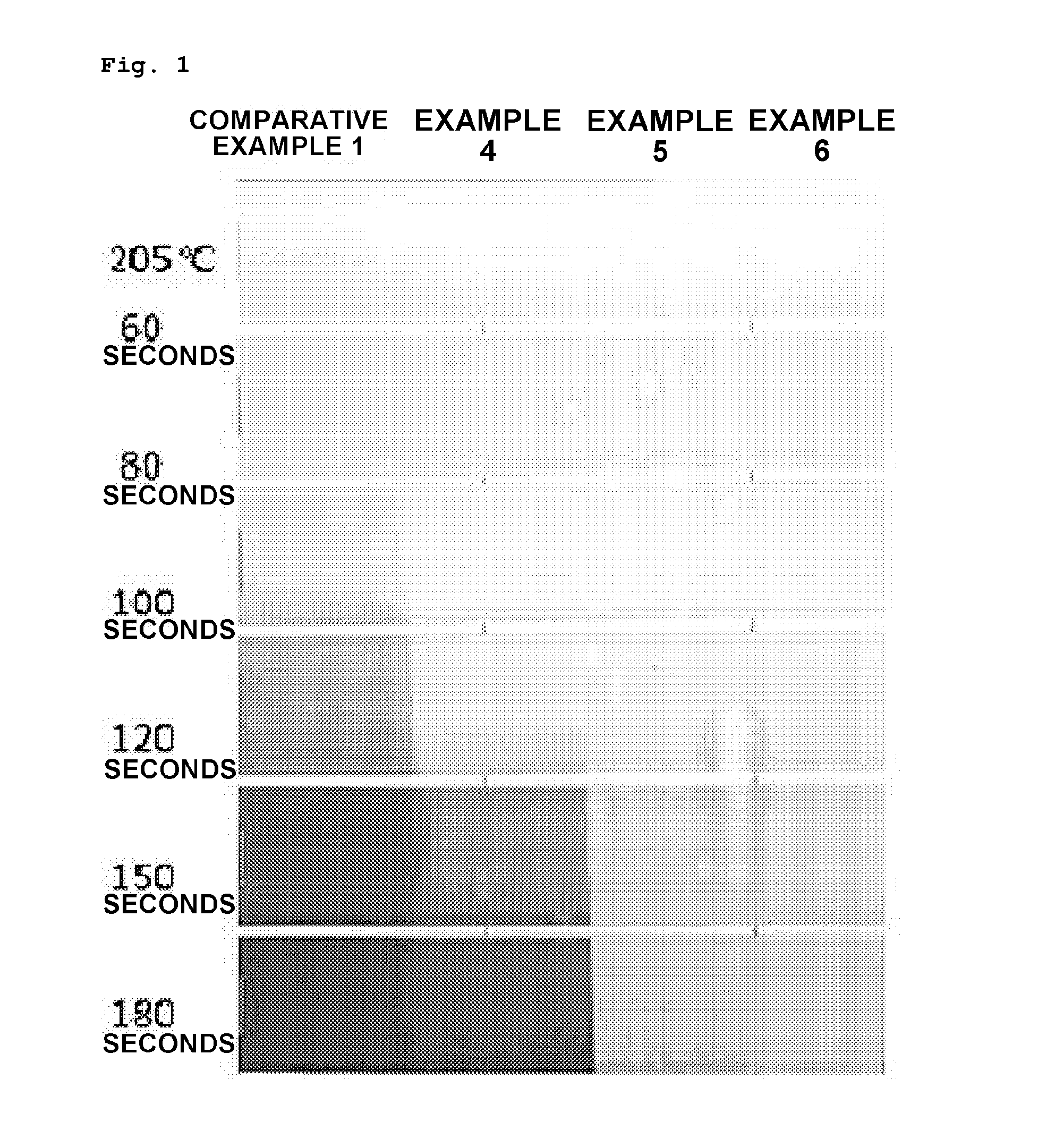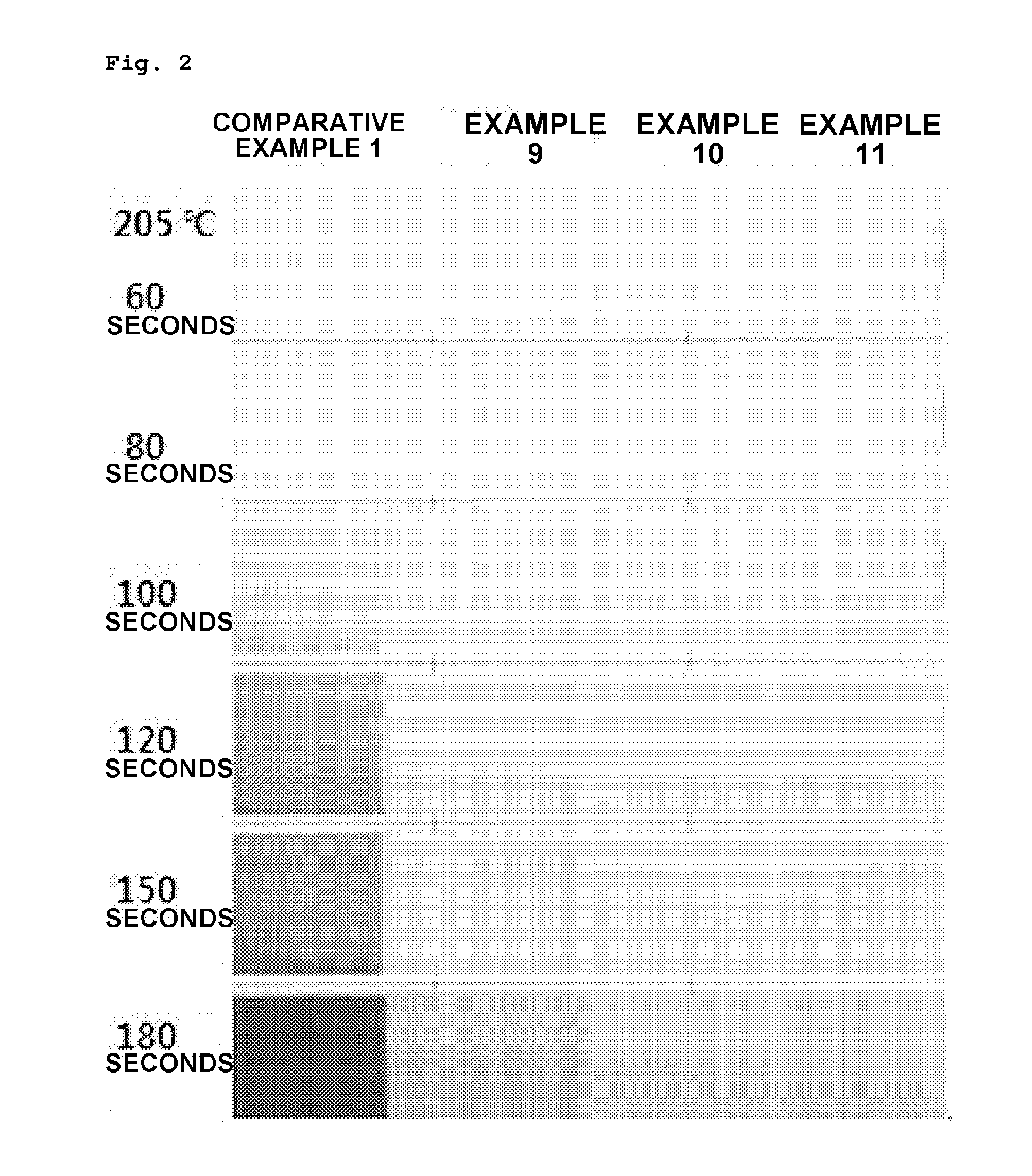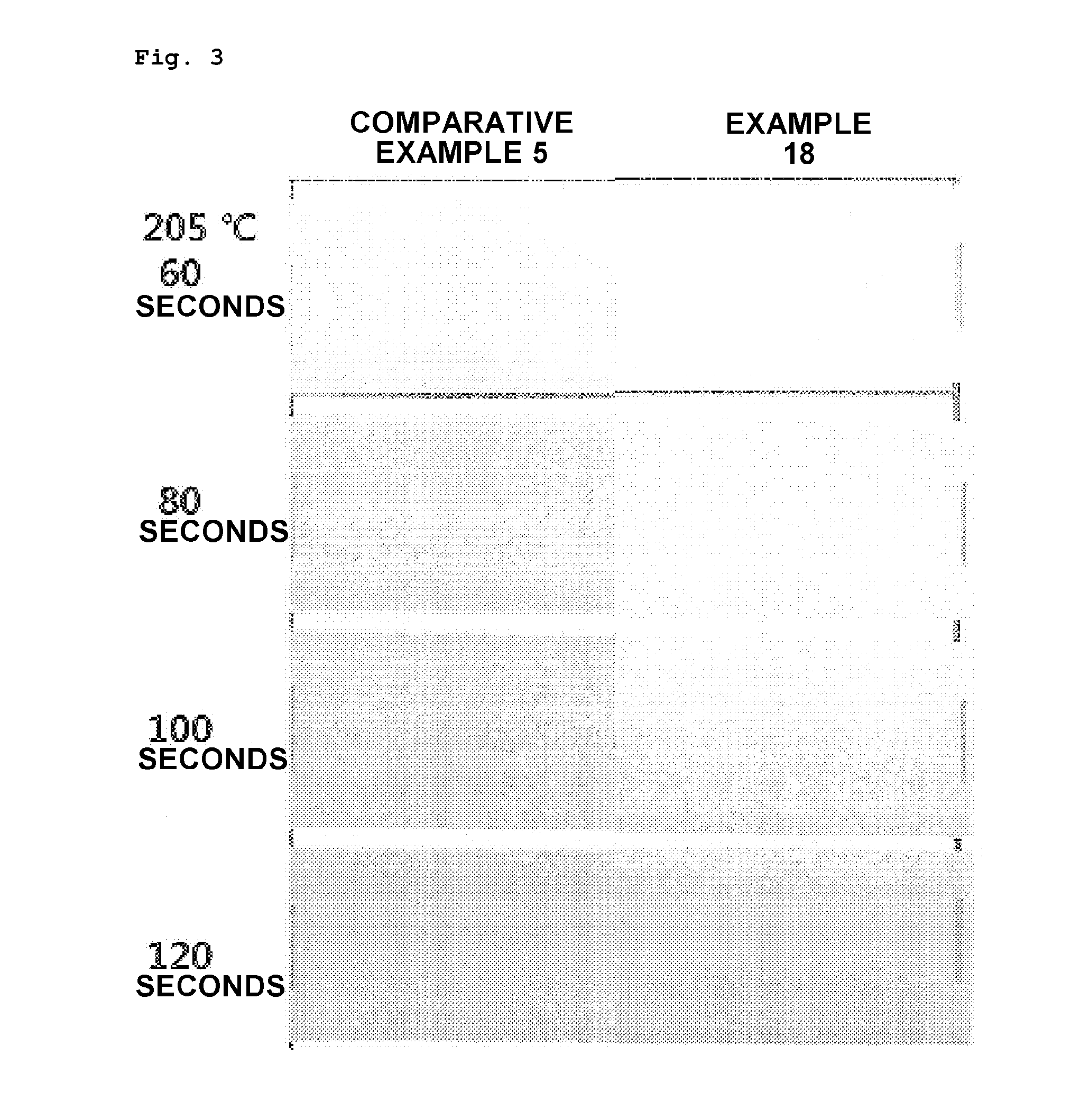Preparation method of vinyl chloride polymer and vinyl chloride polymer prepared thereby
a technology of vinyl chloride polymer and polymer, which is applied in the field of preparation method of vinyl chloride polymer and vinyl chloride polymer prepared thereby, can solve the problems of chemical defects generated during polymerization reaction, inducing dehydrochlorination, discoloration of resins or physical properties, etc., and achieves reduced dehydrochloric generation, reduced dehydrochloric generation, and improved thermal stability.
- Summary
- Abstract
- Description
- Claims
- Application Information
AI Technical Summary
Benefits of technology
Problems solved by technology
Method used
Image
Examples
preparation example 1
[0086]110 parts by weight (73 kg) of de-ionized water, 1.83 parts by weight (1.21 kg) of lauryl peroxide (LPO), and 0.001 parts by weight (0.9 g) of paraquinone were injected to a 200 L, high pressure reactor, followed by making the inner side of the reactor vacuous by reducing the pressure to −730 mmHg. To the reactor in a vacuum state, 100 parts by weight (66 kg) of a vinyl chloride monomer and 11.8 parts by weight (7.8 kg) of sodium dodecyl benzene sulfonate (15%) were injected, followed by stirring for 15 minutes. The inner temperature of the reactor was decreased to 20° C. or less, and homogenized for 2 hours using a rotor-stator type homogenizer. After completing homogenizing, the inner temperature of the reactor was decreased to 42° C. to allow polymerizing reaction. After 558 minutes, the pressure in the reactor reached 3.5 kg / cm2, and the reaction was finished. Unreacted vinyl chloride monomer was recovered and removed to obtain a first seed having an average particle diame...
preparation example 2
[0087]124 parts by weight (230 kg) of polymerization water, 0.54 parts by weight of a first emulsifier (lauric acid 790 g / NaOH 240 g) and 0.059 parts by weight (110 g) of potassium persulfate (KPS) were injected to a 500 L, high pressure reactor, followed by stirring and making the reactor vacuous. 100 parts by weight (185 kg) of a vinyl chloride monomer was injected to the reactor in a vacuum state, followed by elevating the temperature in the reactor to 56° C. to initiate polymerization. After initiating polymerization, 6 parts by weight (11.1 kg) of a second emulsifier (sodium dodecyl benzene sulfonate) was continuously injected to the reactor for 5 hours. After the pressure in the reactor reached 4 kg / cm2, the reaction was finished. Unreacted vinyl chloride monomer was recovered and removed to obtain a second seed having an average particle diameter of 0.12 μm.
example 1
[0088]70 parts by weight (150 kg) of de-ionized water, 7 parts by weight (15 kg) of the first seed prepared in Preparation Example 1 and 2.8 parts by weight (6 kg) of the second seed prepared in Preparation Example 2 were injected to a 500 L, high pressure reactor, followed by stirring and making the reactor vacuous. 100 parts by weight (215 kg) of a vinyl chloride monomer was injected to the reactor in a vacuum state, followed by elevating the temperature in the reactor to 58° C. to initiate polymerization. After initiating polymerization, 0.7 parts by weight (1.5 kg) of sodium dodecyl benzene sulfonate was continuously injected to the reactor, followed by stirring for 300 minutes to allow reaction. 0.1 parts by weight of tetrasodium diphosphate (TSDP) relative to 100 parts by weight of the vinyl chloride monomer was injected and introduced to the reactor at a point when a polymerization conversion ratio was 30%. After the pressure in the reactor reached 4.0 kg / cm2, the reaction wa...
PUM
| Property | Measurement | Unit |
|---|---|---|
| temperature | aaaaa | aaaaa |
| particle diameter | aaaaa | aaaaa |
| particle diameter | aaaaa | aaaaa |
Abstract
Description
Claims
Application Information
 Login to View More
Login to View More - R&D
- Intellectual Property
- Life Sciences
- Materials
- Tech Scout
- Unparalleled Data Quality
- Higher Quality Content
- 60% Fewer Hallucinations
Browse by: Latest US Patents, China's latest patents, Technical Efficacy Thesaurus, Application Domain, Technology Topic, Popular Technical Reports.
© 2025 PatSnap. All rights reserved.Legal|Privacy policy|Modern Slavery Act Transparency Statement|Sitemap|About US| Contact US: help@patsnap.com



